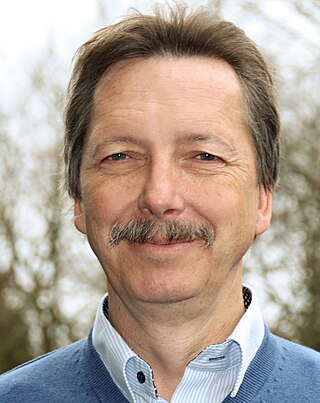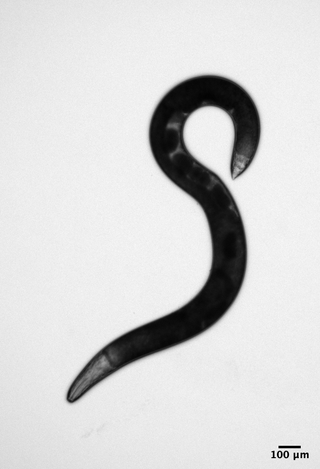
Max Karl Ernst Ludwig Planck was a German theoretical physicist whose discovery of energy quanta won him the Nobel Prize in Physics in 1918.

The University of Göttingen, officially the Georg August University of Göttingen, is a public research university in the city of Göttingen, Germany. Founded in 1734 by George II, King of Great Britain and Elector of Hanover, and starting classes in 1737, the Georgia Augusta was conceived to promote the ideals of the Enlightenment. It is the oldest university in the state of Lower Saxony and the largest in student enrollment, which stands at around 31,600.

Leipzig University, in Leipzig in Saxony, Germany, is one of the world's oldest universities and the second-oldest university in Germany. The university was founded on 2 December 1409 by Frederick I, Elector of Saxony and his brother William II, Margrave of Meissen, and originally comprised the four scholastic faculties. Since its inception, the university has engaged in teaching and research for over 600 years without interruption.

The Max Planck Society for the Advancement of Science is a formally independent non-governmental and non-profit association of German research institutes. Founded in 1911 as the Kaiser Wilhelm Society, it was renamed to the Max Planck Society in 1948 in honor of its former president, theoretical physicist Max Planck. The society is funded by the federal and state governments of Germany.

The Kaiser Wilhelm Society for the Advancement of Science was a German scientific institution established in the German Empire in 1911. Its functions were taken over by the Max Planck Society. The Kaiser Wilhelm Society was an umbrella organisation for many institutes, testing stations, and research units created under its authority.
Dauer describes an alternative developmental stage of nematode worms, particularly rhabditids including Caenorhabditis elegans, whereby the larva goes into a type of stasis and can survive harsh conditions. Since the entrance of the dauer stage is dependent on environmental cues, it represents a classic and well studied example of polyphenism. The dauer state is given other names in the various types of nematodes such as ‘diapause’ or ‘hypobiosis’, but since the C. elegans nematode has become the most studied nematode, the term ‘dauer stage’ or 'dauer larvae' is becoming universally recognised when referring to this state in other free-living nematodes. The dauer stage is also considered to be equivalent to the infective stage of parasitic nematode larvae.

The Max Planck Institute for Solar System Research is a research institute in astronomy and astrophysics located in Göttingen, Germany, where it relocated in February 2014 from the nearby village of Lindau. The exploration of the Solar System is the central theme for research done at this institute.
Androdioecy is a reproductive system characterized by the coexistence of males and hermaphrodites. Androdioecy is rare in comparison with the other major reproductive systems: dioecy, gynodioecy and hermaphroditism. In animals, androdioecy has been considered a stepping stone in the transition from dioecy to hermaphroditism, and vice versa.

Jürgen Ehlers was a German physicist who contributed to the understanding of Albert Einstein's theory of general relativity. From graduate and postgraduate work in Pascual Jordan's relativity research group at Hamburg University, he held various posts as a lecturer and, later, as a professor before joining the Max Planck Institute for Astrophysics in Munich as a director. In 1995, he became the founding director of the newly created Max Planck Institute for Gravitational Physics in Potsdam, Germany.

The nematodes, roundworms or eelworms constitute the phylum Nematoda. They are a diverse animal phylum inhabiting a broad range of environments. Most species are free-living, feeding on microorganisms, but there are many that are parasitic. The parasitic worms (helminths) are the cause of soil-transmitted helminthiases.

Werner E. Reichardt was a German physicist and biologist who helped to establish the field of biological cybernetics. He co-founded the Max Planck Institute for Biological Cybernetics, and the Journal of Biological Cybernetics.

Thomas K. Henning is a German astrophysicist. Since 2001, he is a director at the Max Planck Institute for Astronomy. Henning is an expert in the field of star and planet formation.

AceDB is a biological database for handling genomic data. It was developed by Richard M. Durbin and Jean Thierry-Mieg in 1989. AceDB stands for a C. elegans database. Although AceDB was initially created as a database specifically for the nematode worm it has also come to mean the database software itself, which has been used to store information for other species. According to its website, AceDB provides a custom database kernel with a non-standard data model designed with flexibility in mind. For example, there is an AceDB instance for the organism Pristionchus pacificus called AppaDB. Much of the functionality of AceDB for C. elegans has been made available through the WormBase database.
Ralf Josef Sommer is a German biologist specializing in evolutionary developmental biology.
WormBase is an online biological database about the biology and genome of the nematode model organism Caenorhabditis elegans and contains information about other related nematodes. WormBase is used by the C. elegans research community both as an information resource and as a place to publish and distribute their results. The database is regularly updated with new versions being released every two months. WormBase is one of the organizations participating in the Generic Model Organism Database (GMOD) project.

Diplogastridae, formerly Diplogasteridae, are a family of nematodes (roundworms) known from a wide range of habitats, often in commensal or parasitic associations with insects.

Pristionchus is a genus of nematodes (roundworms) in the family Diplogastridae that currently includes more than 50 described species. They are known mainly as non-parasitic associates of insects, especially beetles, while others have been reported from soil, organic matter, or rotting wood. The genus includes P. pacificus, a satellite model organism to the well-studied nematode Caenorhabditis elegans.

Pristionchus pacificus is a species of free-living nematodes (roundworms) in the family Diplogastridae. The species has been established as a satellite model organism to Caenorhabditis elegans, with which it shared a common ancestor 200–300 million years ago. The genome of P. pacificus has been fully sequenced, which in combination with other tools for genetic analysis make this species a tractable model in the laboratory, especially for studies of developmental biology.
P. pacificus may refer to:

Allodiplogaster sudhausi is a free-living nematode species in the Diplogastridae family. It was described in 2008 as Koerneria sudhausi, before being moved to the genus Allodiplogaster in 2014. A. sudhausi is omnivorous. It predates on other nematodes, but can be cultured on Escherichia coli OP50 bacterium on agar.












